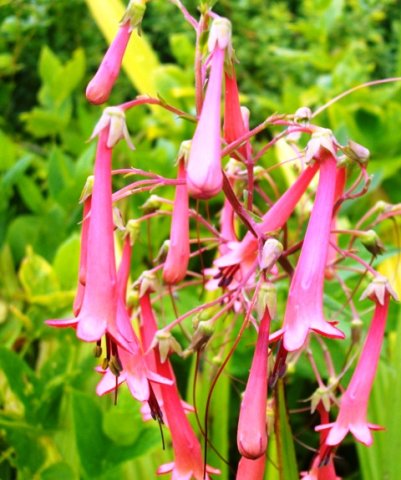Phygelius aequalis flowers

Author: Ivan Lätti
Photographer: Ivan Lätti
Phygelius aequalis produces tall, erect panicles of drooping, tubular, trumpet flowers. The mostly dusky pink to salmon and occasionally pale yellow flower tubes are characteristically long and thin, ending in five small lobes evenly spreading around the mouths. The four dark red stamens in two unequal pairs all protrude from every flower.
Flowering happens almost all year round with a lapse at the end of winter to early spring.
The specific name, aequalis, a Latin word meaning equal refers to the even or equal lobes at the tips of the long flower tubes, contrasting against the oblique flower mouths on P. capensis, the other South African species.
The fruit is a green, ovoid capsule (Manning, 2009; Pooley, 1998; iNaturalist; https://pza.sanbi.org).

